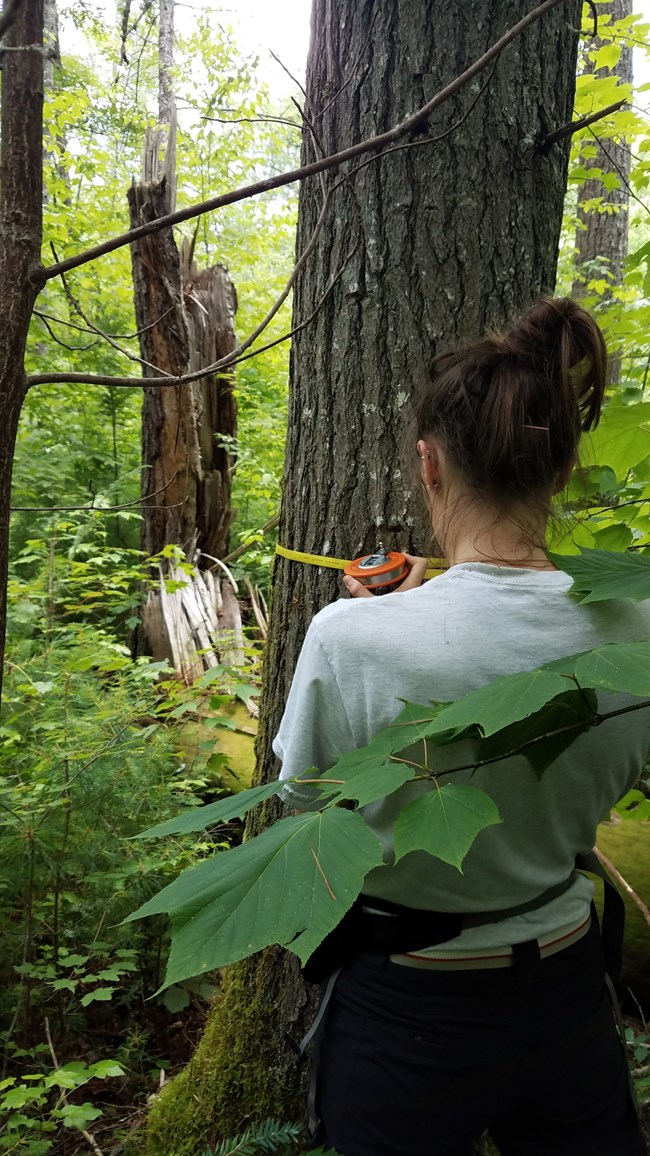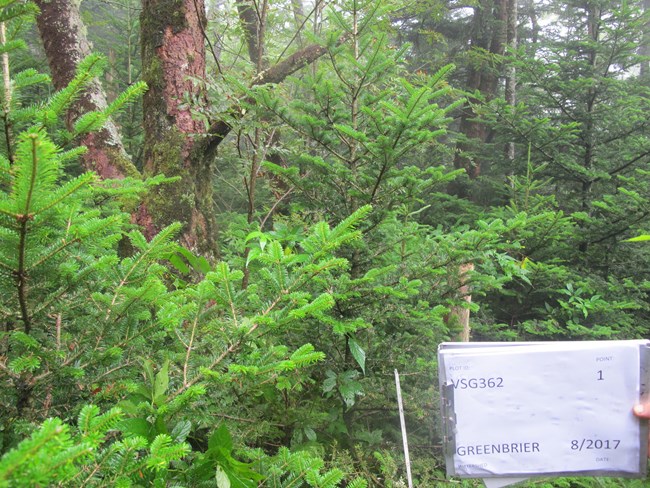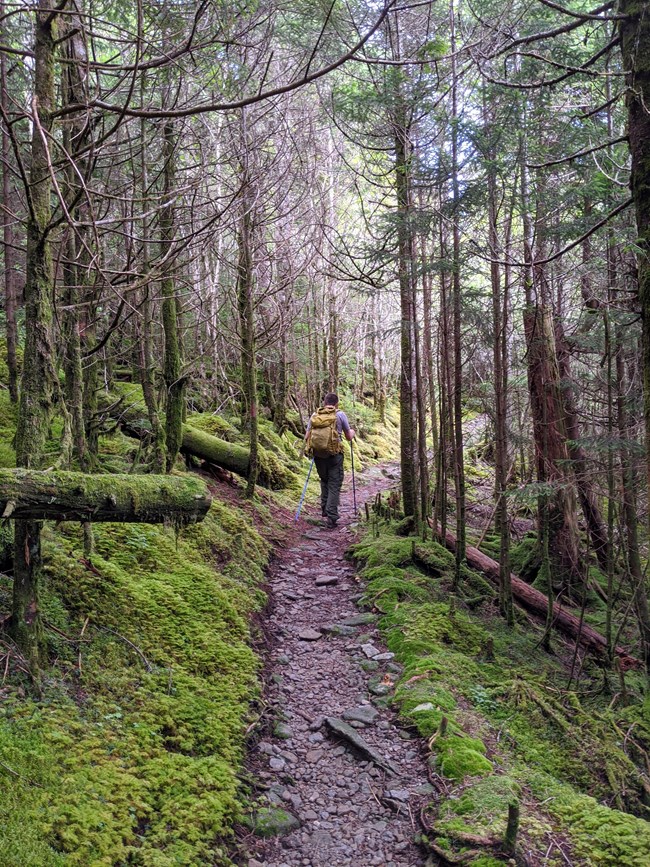Last updated: May 11, 2021
Article
Plotting the Future: A Day in the Life of a Forest Ecologist

NPS Photo
We pack our overnight gear into our backpacks, along with the tools of the monitoring trade – metal rebar, measuring tapes, hammers, nails, flagging, clipboards, and datasheets. Then we hit the trail at daylight. Today’s objective, Plot VSG362. That’s “Vital Signs – Greenbrier #362”, one of the 160 dots on the map that represent random plot locations for monitoring. These plots will be rectangles of forests that are marked with rebar stakes where we will collect data on forest growth, and return to periodically see how forests are changing. These locations run the gamut of Smokies forests: from high to low elevation, North Carolina to Tennessee. Once collected, data from these plots will give us a better picture on the health of our forests.
Though none of us have been to plot VSG362, we can see on the map that it’s somewhere in the saddle between Mount Guyot and Old Black, so we expect spruce-fir forests with dense growth of small trees. These forests were hit hard by a non-native forest pest, balsam woolly adelgid (Adelges piceae), in the latter half of the 20th century, which killed much of the Fraser fir (Abies fraseri).The increased sunlight on the forest floor has spurred thickets of regenerating fir and red spruce (Picea rubens) saplings.

NPS Photo
By this point in the summer, the crew is a well-oiled machine, and without much discussion everyone grabs their gear and begins installing the plot. We use measuring tapes and compasses to create a long rectangle in the forest, 20 meters wide by 50 meters long. At the corners and a few other strategic locations, we sink two-foot pieces of tagged rebar into the ground so that the exact same rectangle can be recreated in future years. We further divide the interior of the plot with measuring tapes into 10 different squares, 10 by 10 meters each. Due to the thick vegetation, it takes about two hours to get the plot set up, and then it’s time to get to work collecting data.

NPS Photo
Collecting Plot Data
The crew divides into teams and begins working through the datasheets. A team of two identifies, measures, tags and maps overstory trees – today there will be 81 living trees and 57 dead trees to work through (Figure 1, following page). Another crew begins identifying and counting saplings, shrubs, and seedlings in smaller portions of the plot, then will take core samples from two trees using an increment borer. These measurements will tell us how this forest has and will continue to change. Counting tree rings on the cores, we will be able to understand how this forest has changed in the past. And we can understand the forest’s future potential based on the seedlings and saplings marching towards the canopy. That leaves a team of one, me, to create a full plant species list, collect soil samples and record environmental data such as slope, aspect, soil depth and canopy cover.Progress is slow in this dense plot, and even with the early start to the day, we don’t finish until after lunch. The crew packs up the plot gear (minus the rebar stakes and tree tags, which are left in place) and is eager to get back on trail and out of their soaked rain gear. We have seven miles to go, down Snake Den Ridge Trail to our vehicle. We head down trail, naturally breaking into groups based on our hiking speed. As usual, I fall towards the back, preferring to move a little slower under the weight of an overnight pack (Figure 3). I enjoy good conversation with my crew members on the way down and think ahead to next week’s work. Plot VSG362 was the thirtieth plot of the year, leaving just two to go before the field season ends.
It will take five of these field seasons to collect data from all 160 plots. After that, we’ll start over again, collecting data from each plot for a second cycle. There is something reassuring about the thought of returning to VSG362 five years from now, almost like returning to your hometown after a few years away and driving around to see what’s changed. I’m sure a lot of the details from today will become hazy in my mind as time goes on and completed plots accumulate, but I know the data we collected today will always be there, a snapshot in time, to tell the story of this 20 x 50 plot of earth.
I shake my head and return to the conversation at hand. It’s the classic “What’s for dinner” conversation that happens so often in the last few hours of a multi-night backpacking trip. I remind myself that I’m lucky to work as part of a crew that I genuinely like spending time with, since we spend so much of it together this time of year. Just another day in the life of a forest ecologist.

NPS Photo
